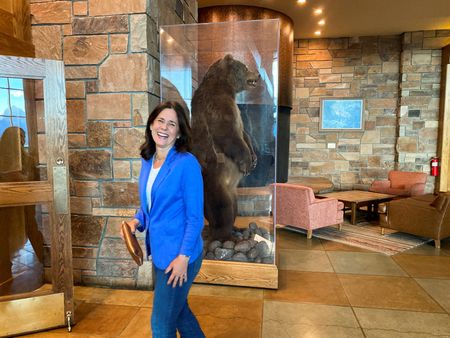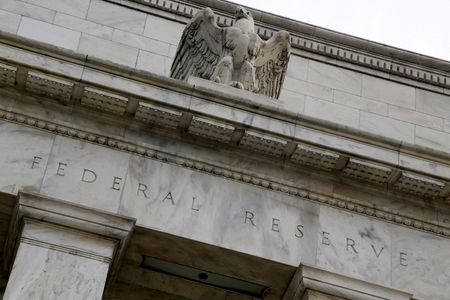By Ann Saphir
DALLAS (Reuters) -The recent rise in long-term U.S. Treasury yields, and tighter financial conditions more generally, could mean less need for the Federal Reserve to raise interest rates further, Dallas Fed President Lorie Logan said on Monday.
“I expect that continued restrictive financial conditions will be necessary to restore price stability in a sustainable and timely way,” Logan, one of the Fed’s more hawkish policymakers, told the National Association for Business Economics, noting that financial conditions have become “notably” tighter in recent months, even though the U.S. central bank has not raised its short-term policy rate since July.
A good part of that rise, she said, may come from investors demanding to be paid more for holding U.S. debt over a longer-term, reflecting a higher so-called “term premium.”
“If long-term interest rates remain elevated because of higher term premiums, there may be less need to raise the fed funds rate,” Logan said.
The central bank’s Federal Open Market Committee (FOMC) has lifted its policy rate by 5.25 percentage points since March 2022, but last month it left it in the current 5.25%-5.50% range and signaled it would proceed carefully. Policymaker projections issued at that meeting indicated one more quarter-percentage-point rate hike would likely be needed by the end of the year.
To hear one of the Fed’s more vocal supporters of its aggressive rate hiking campaign, and one of its foremost experts in financial markets, open the door to the possibility that the central bank may now be done had economists buzzing.
“Between hearing from (San Francisco Fed President) Mary Daly say the same thing, and then Lorie Logan – again, this is her expertise, this is her area, this whole rise in bond yields – so yes, I would say it lowers the odds that they’ll hike again,” said Julia Coronado, president and founder of MacroPolicy Perspectives.
“I think it’s fair to read Lorie as saying, although she’s been on the more hawkish side of the debate, she herself is not inclined at this moment to push for another rate hike, given the amount of tightening that’s gone on on the long-end,” said Krishna Guha, vice chairman of Evercore ISI.
‘CLEAR ROLE’
Logan’s speech was careful and nuanced, as Guha and others noted, and certainly did not suggest that her mind was made up.
The Dallas Fed president said the economy has been stronger than she had expected, as has been the labor market, and that inflation was still too high despite progress in lowering it.
The rise in long yields, she noted, could reflect expectations that the economy is still running strong, and if so, “the FOMC may need to do more.”
But because Logan ran the New York Fed’s bond portfolio for years before she took the top job at the Dallas Fed, her views on what’s driving long-term rates higher could carry considerable weight as policymakers weigh their next moves.
Higher term premiums play a “clear role” in the rise in long-term yields, Logan said, citing the results of surveys, models, and her own assessment of investor expectations that the Fed will continue to allow its balance sheet to shrink even after it begins reducing interest rates to account for falling inflation.
“The expectation of lower Federal Reserve asset holdings over time implies that other investors will need to hold more long-duration securities, which appears to be one factor among the many contributing to higher term premiums,” Logan said.
Figuring out how much of the higher long-term rates is due to higher term premiums is complex, she added.
“I will be carefully evaluating both economic and financial developments to assess the extent of additional policy firming that may be appropriate to deliver on the FOMC’s mandate,” Logan said. “I remain attentive to risks on both sides of our mandate. In my view, high inflation remains the most important risk. We cannot allow it to become entrenched or reignite.”
(Reporting by Ann Saphir; Editing by Paul Simao)


